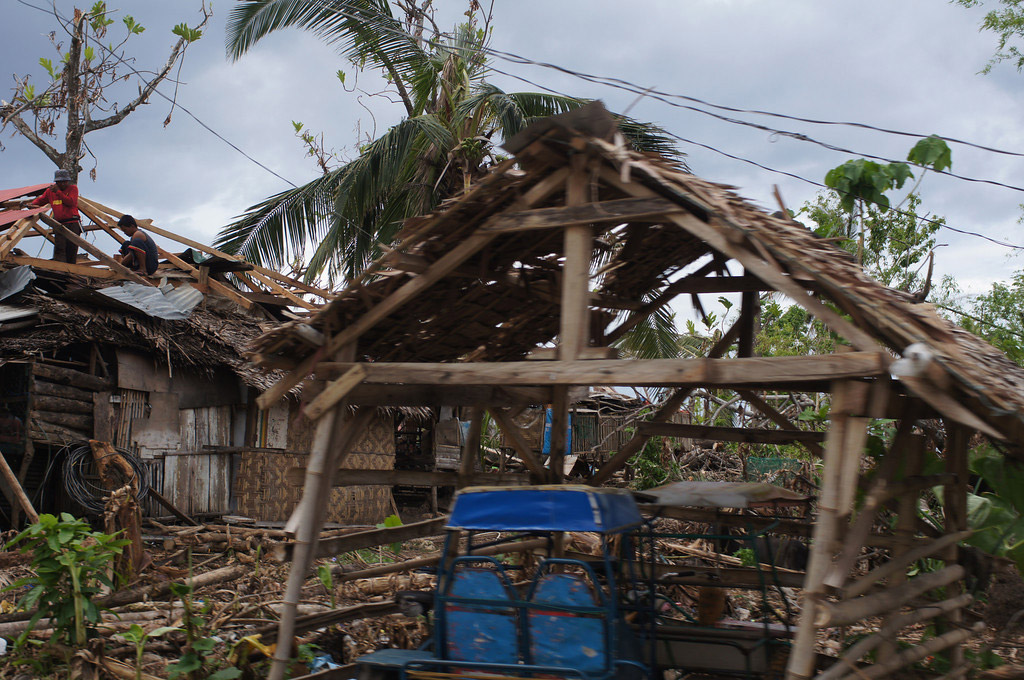
More than 30 million people risk feeling the brunt of Typhoon Hagupit as it barrels down on the Philippines, United Nations emergency and humanitarian officials warned today as they outlined the Organization-wide preparations being made before the massive storm makes landfall this weekend.
At a press briefing in Geneva, Denis McClean, a spokesperson for the UN Office for Disaster Risk Reduction (UNISDR), said the Category 5 typhoon has triggered one of the largest peace time evacuations in Philippines history, noting that the extent of the evacuation “appeared to rival” the one million people evacuated last year when Cyclone Phailin threatened India’s coastline.
As a result, he said, schools and local Government offices had been closed and evacuation centres were filling up as people were rapidly moving out of danger zones. While around 10 million residents of the Philippines are at risk of flooding, storm surges and strong winds, “more than 30 million people could feel the impact,” he added.
Typhoon Hagupit, known locally as “Ruby,” has stirred unease among many Filipinos following the devastation wrought by the last super storm to hit the archipelago – Typhoon Haiyan.
Haiyan is the biggest typhoon recorded in almost a century, and according to the Office for the Coordination of Humanitarian Affairs (OCHA), as it slammed into the Philippines in the early hours of 8 November 2013, it killed thousands and affected nearly 9.8 million people, displaced some 4 million people and destroyed 500,000 homes.
The storm also devastated the country’s infrastructure, hospitals, schools and public services, causing $12 billion in estimated damages while also laying waste to the agricultural sector.
One-point-one million tonnes of crops suffered severe damage within hours of the super storm’s landfall. Coconut farmers, for instance, lost some 44 million trees to the storm dealing a debilitating blow to their livelihoods; coconut trees take six to eight years to become productive again. At the same time, nearly two-third of fishing communities lost their productive assets.
Mr. McClean explained that lessons learned from Typhoon Haiyan were being applied as local Governments were taking the lead in disseminating early warnings and ensuring that the public was fully aware of the threats posed to their safety.
At the same time, Corinne Momal-Vanian, a spokesperson for the World Food Programme (WFP), said the agency was closely monitoring the typhoon’s trajectory and had food stocks available and staff on standby.
Ms. Momal-Vanian noted that the WFP had already 260 metric tonnes of high-energy biscuits, almost 4,000 metric tonnes of rice and over 130 metric tonnes of ready-to-use supplementary food – enough to provide emergency assistance to 1.8 million people during an initial two-week period.
According to the latest forecasts prepared by the UN’s World Meteorological Agency (WMO), Typhoon Hagupit appears to be heading to the country’s north, which may spare the densely populated regions of the central Philippines. Nonetheless, Hagupit remains “a very strong storm” with 50 metre per second wind speeds and 70 metre per second wind gusts.
Christiane Berthiaume, speaking on behalf of the International Organization for Migration (IOM), said a worst-case disaster scenario would see up to 32 million people affected by the storm and that the IOM had been assisting authorities with evacuations – particularly in areas where those displaced by Haiyan continue to live in tents.
[UNITED NATIONS]







